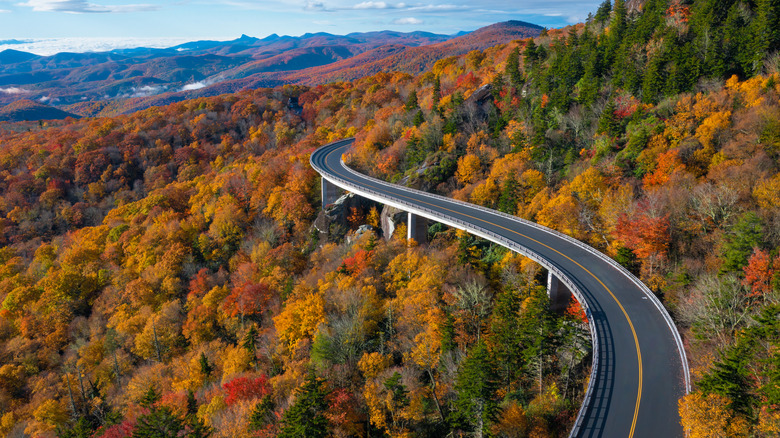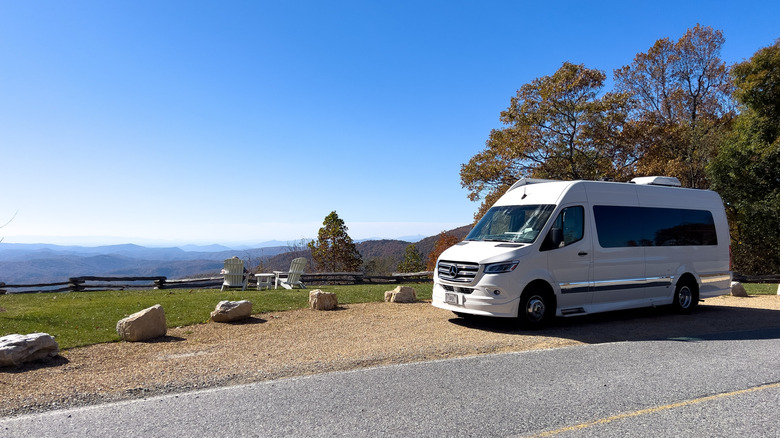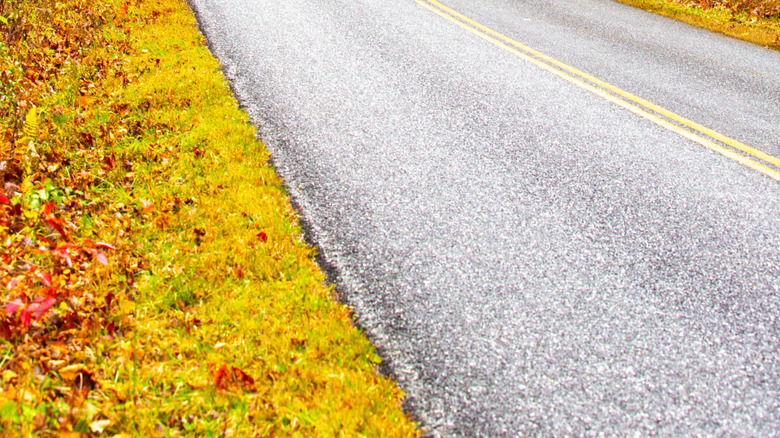The Blue Ridge Parkway is widely considered one of the most beautiful roads in the United States. At 469 miles from end to end, the parkway cuts through the forested highlands of (mostly) North Carolina, with sections in Virginia as well. This great swath of the Appalachians rolls and peaks all around, and drivers are treated to hours of tear-jerkingly wonderful views. The motorway’s motto is “America’s Favorite Drive,” and road-trippers routinely weave this rural route into their itineraries, detouring miles out of their way to drive between Rockfish Gap, Virginia, and Cherokee, North Carolina.
You would think, with so much meandering pavement and eight distinct campgrounds along the route, that the Blue Ridge Parkway would be an ideal destination for RVs and campers. On the one hand, you’re right: Lots of seasoned RV drivers make their pilgrimage to North Carolina each year, gazing at the scenery through the broad windshields and finding handy electric and water hookups along the way. In most ways, they follow the same travel patterns as car drivers and cyclists, building their ideal Appalachian getaway along the Blue Ridge Parkway.
But navigating this road in a large vehicle isn’t as simple as packing up and going. Many are surprised to learn how antiquated the parkway is, predating the Class A motorhomes that now rumble down U.S. interstates. Engineers weren’t prepared for such large vehicles back in the Great Depression, and attempting to drive a 38-foot Palazzo through these tunnels and around these curves can be a harrowing experience.
The historic roots of the Blue Ridge Parkway
Way back in 1933, the Blue Ridge Parkway was the brainchild of U.S. Senator Harry Byrd and newly elected President Franklin Delano Roosevelt. This was a visionary project; at the time, multi-lane interstates were still a distant dream, and many major highways across the country were unpaved. Fewer than one in five Americans owned any kind of automobile, and about a quarter of U.S. adults were unemployed. The idea of a fun jaunt around the country in a “tin can” (as campers were often known) was well beyond the means of most Americans.
The Blue Ridge Parkway can seem quaint in the era of superhighways: only two lanes, limited shoulders, and a whopping 26 tunnels through the mountains. These tunnels have vintage stone arches and a railroad-like aesthetic. More importantly, the tunnels have modest clearance; Big Witch Tunnel has the shortest clearance, at 11 feet and 7 inches, and many others are only a little over 13 feet. A Class A motorhome can stand as tall as 11 or 13 feet above the pavement, and that’s assuming nothing is strapped to the top. Even if an RV can technically slip through these tunnels without screeching along the ceiling, drivers may clench their teeth through such confined spaces.
The same goes for RV length: the parkway is famous for its narrow width and many tight turns. This can be a thrilling experience for drivers of average-sized cars, even at the maximum speed of 45 miles per hour, but it’s downright uncomfortable for a Class A RV, which can stretch as long as 45 feet. For inexperienced motor-campers, size and maneuverability are just two things to know before renting an RV for a road trip.




